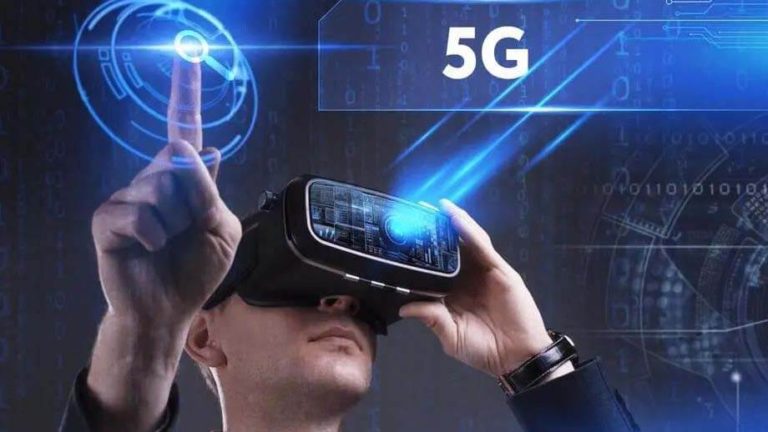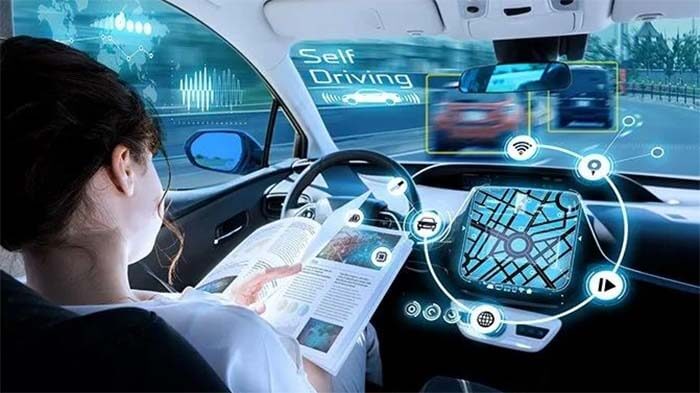As the latest generation of communication network technology, 5G technology has a huge impact on the development of many industries with its ultra-high-speed, ultra-large connections, and ultra-low latency. The International Telecommunications Union (ITU) at the 22nd meeting identified the three latest 5G applications in the future.
The three latest 5G application scenarios.
- Enhanced mobile broadband, eMBB
- Massive machine-type communications, mMTC
- Ultra-reliable and low latency communications, URLLC
Specifically, it includes gigabit mobile broadband data access, smart homes, smart buildings, voice calls, smart cities, 3D video, ultra-high-definition video, cloud office, cloud gaming, augmented reality, industrial automation, mission-critical applications, autonomous vehicles, etc.
China has always been in a leading position in the development and construction of 5G technology. On January 26, the Ministry of Industry and Information Technology released a set of data on 5G construction.
In 2020, more than 600,000 5G base stations will be newly built, realizing the full coverage of 5G networks in all prefecture-level cities and above; the number of 5G terminal connections will exceed 200 million.
Many industries are seizing the major opportunities brought by 5G commercialization and accelerating the process of industrial digitization; more than 1,100 5G+ industrial Internet projects, 5G+ remote consultations are online in more than 60 hospitals in 19 provinces, 5G+ autonomous driving, 5G+ smart grid, 5G+ New models and formats such as distance education continue to emerge.
In June 2019, the Ministry of Industry and Information Technology issued 5G commercial licenses to the four major telecom operators of China Unicom, China Telecom, China Mobile, and China Radio and Television, which officially opened the prelude to the Chinese 5G empowerment of thousands of industries.
In the white paper on Ten Major Application Scenarios in the 5G Era released by Huawei, cloud VR/AR, Internet of Vehicles, smart manufacturing, smart energy, wireless medical care, wireless home entertainment, connected drones, social networks, personal AI assistance, and smart cities Listed as the top ten application scenarios that best reflect 5G capabilities.
5G+cloud VR/AR, bring you a superuser experience
Virtual reality (VR) and augmented reality (AR) are transformative technologies that can completely subvert the traditional human-computer interaction content.
ABI Research predicts that by 2025, the total market for VR and AR will reach US$292 billion, of which VR is US$141 billion and AR is US$151 billion. However, the demand for bandwidth of VR/AR services is also extremely huge. For lower-level VR applications such as games, modeling, and 360° video, the existing 4G network with an average throughput of 100 Mbps can basically meet its connection requirements.
But for high-end VR/AR applications such as games, modeling, real-time rendering, and immersive teaching that need to provide ultra-high user experience, it is a general trend for content processing to move to the cloud, because this move not only meets the increasing experience requirements of users, And the price of the equipment can be controlled within the range that everyone can afford.
Obviously, 5G is currently the preferred solution for the cloud on VR/AR. Now, domestic telecom operators have begun to deeply participate in the cloud VR/AR industry, and the future market space is very considerable. It is expected to exceed US$93 billion by 2025, accounting for about 30% of the total VR/AR market.

The figure shows the combination of 5G and VR/AR will bring a super user experience
5G + Internet of Things, empowering all things to connect
The advantage of the integration of 5G and the Internet of Things lies in how big the 5G network is, the coverage of the Internet of Things will be large. The 5G+ Internet of Things does not require customers to build a network separately, and the cost of network construction is greatly reduced.
The emergence and comprehensive coverage of 5G have solved the application problems of the Internet of Things in terms of high reliability, high speed, and low power consumption, and realized the leap from the basic layer to the application layer.
This convergence trend is expected to drive the rapid growth of the number of connections to the Internet of Animals. According to China Mobile’s forecast, by 2022, the number of IoT connections will reach 4.5 billion, of which 5G will pull more than 55%. By 2025, the number of IoT connections will exceed 5.3 billion, at which time the contribution of 5G will rise to 73%.
From the Internet of People to the Internet of Everything, 5G has not only changed the way we communicate but also will further change the way we communicate with the surrounding environment. This beautiful picture of the smart world is worth looking forward to.
5G+ drones, realize unprecedented intelligent flight
Realizing intelligent flight is the development trend in the UAV industry. The network characteristics of 5G can meet the network requirements of UAVs with high transmission rates and low latency. With the help of 5G, UAVs will break the limitations of traditional UAV manual control and realize intelligent flight.
The most intuitive result is that UAVs will have a wider application space and more diversified functions, ranging from aerial photography to security, Monitoring, and even spreading pesticides, you can enjoy the convenience brought by intelligent flight. In addition, 5G can also establish an effective air management network for drones, thereby greatly increasing the speed of missions and ensuring flight safety.
With the comprehensive promotion of 5G and the gradual maturity of 5G+ drone technology, the scale of the drone market is bound to expand greatly. According to the research data of the China Industry Research Institute and Kaiyuan Securities Research Institute, it is estimated that by 2025, the domestic consumer and entertainment aerial photography market will reach 30 billion, the agricultural and forestry plant protection drone application market will reach 20 billion, and the security market will reach 15 billion.
The power inspection market is about 5 billion, and other markets such as logistics and environmental monitoring are about 5 billion, and the total scale will exceed 75 billion.
5G + Internet of Vehicles: Helping autonomous driving quickly enter actual combat
The prospect of autonomous driving is very broad. According to estimates by Navigant Research, the number of autonomous vehicles in the world will reach 23 million in 2030. According to McKinsey Consulting’s forecast data, my country’s total sales of autonomous vehicles will reach approximately 1.3 trillion yuan in 2030, and will rise to 2.5 trillion yuan in 2040.

The figure shows 5G provides technical support for the realization of autonomous driving
Autonomous driving requires real-time transmission of massive amounts of data. At the same time, when the vehicle is driving at high speed, millisecond-level processing and operation judgments are required for the received information.
The existing 4G network is difficult to meet these requirements. 5G has high reliability and low latency. Autonomous driving has always been one of the most promising applications of 5G. It can effectively reduce the occurrence of traffic accidents. By providing high-bandwidth and low-latency networks for automobiles and road infrastructure, 5G can provide high-level road perception and precise navigation services.
In the development process of the Internet of Vehicles, 5G has provided strong technical support for its realization of multi-scenario applications.
5G+ smart medical care will benefit thousands of families and individuals
5G technology has greatly improved the degree of informatization in the medical industry. Automatic collection of health data, remote surgery, remote diagnosis and treatment, and super ambulances are all important components of smart medical care.
In the hospital, the medical information system and the mobile terminal are connected through the 5G network, and doctors can complete rapid access to large medical report documents such as X-ray images in real-time, shortening the time for patients to seek medical treatment.
In hospitals, there are technical guarantees for remote real-time consultations and remote video training for medical staff. The high-speed characteristics of 5G networks improve the accuracy of diagnosis and make remote high-definition consultations possible. This will benefit medical staff and medical staff in remote areas patient.
Outside the hospital, the combination of 5G high-speed backhaul and 4K video and VR technology allows doctors to understand the conditions of patients in medical vehicles outside the hospital as if they were on the scene. The portable 5G medical terminal is also one of the most talked-about 5G application scenarios in the industry. By then, people can communicate with medical experts remotely at any time through the portable terminal.
The popularization of 5G provides good conditions for the application of the smart medical industry. For example, during the epidemic prevention and control period, 5G has helped governments and institutions achieve precise epidemic monitoring and real-time communication, reducing potential hidden dangers and highlighting the importance of smart medical care.
At present, investment in smart healthcare in various parts of China is also increasing year by year. Technology companies such as Baidu, Alibaba, Tencent, JD.com, and Huawei have already deployed the smart healthcare industry. Through platform construction, they connect doctors, hospitals, and patients together. The Internet healthcare ecosystem chain is beginning to take shape.
As an important terminal in the smart medical industry, the shipment of wearable devices has grown rapidly. In 2019, the global shipment of smart wearable devices reached 305.2 million units, and the shipment of wearable devices in China reached 99.24 million units.
The 5G era opens, and RF chips are in strong demand
5G is still under construction in most parts of the world. According to Gartner’s data, the 5G infrastructure market is expected to reach US$4.2 billion in 2020.
The China Institute of Information and Communications Technology recently released an analysis report on the operation of the domestic mobile phone market in February, showing that the domestic market’s 5G mobile phone shipments reached 15.071 million units in February, accounting for 69.3% of the mobile phone shipments during the same period. There were 16 new models on the market, accounting for 57.1% of the number of new models on the market during the same period.
Chip technology is the foundation of 5G development. In terms of 5G baseband chips, 5G multi-mode and multi-frequency features make chip integration more difficult.
At present, only Qualcomm, Huawei, Samsung, MediaTek, and Intel have launched baseband chip products. In the future, it will reduce the size of the terminal and improve its function of the terminal. Therefore, 5G terminal baseband chips will continue to develop in the direction of highly integrated SoC chips.
The radiofrequency front end (RFFE) device is one of the core devices in the mobile phone.
According to Yole’s prediction, the entire RFFE and wireless network market will more than double that in 2017, reaching $35.1 billion by 2023, and the compound growth rate of filters is as high as 19%. In terms of 5G radio frequency chips, the 5G high-frequency band places higher requirements on the development of basic materials for radiofrequency devices, as well as the design of components such as filters and power amplifiers.
At present, this market is dominated by five major RF companies, including Skyworks, Qualcomm, Qorvo, Broadcom, and Murata. With the continuous research and development of radiofrequency semiconductor materials and key components, domestic companies such as Huawei HiSilicon, and ZTE Microelectronics are actively cutting into the field of high-end radio frequency chips.
The new 5G infrastructure continues to make efforts to promote the gradual construction and improvement of the industrial ecology. According to GSA statistics, as of the end of June 2020, there are 317 categories of 5G devices announced worldwide, covering mobile phones, headsets, hotspots, indoor/outdoor CPEs, laptops, drones, and other types. The comprehensive roll-out of 5G network construction will further expand and accelerate the implementation of application scenarios.
You may also be interested in the below articles.
6 Rules And Techniques For PCB Wiring




